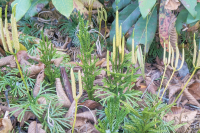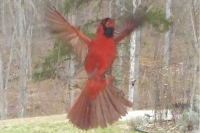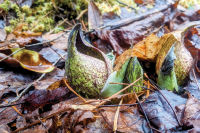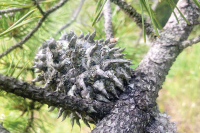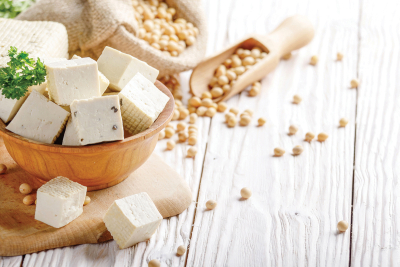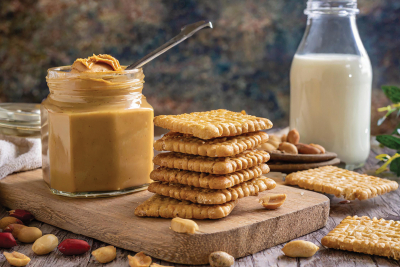A locust by any other name
I’m fairly good at the identification of deciduous trees during the flowering and fruiting seasons, when one can observe bark, leaves, general growth habit, and flowers or fruit. I’m less adept during the winter months, when one can observe just bark, buds, and general growth habit.
One tree, however, that I do recognize without any difficulty whatsoever in winter is the black locust. It’s deeply furrowed and cross-checked bark, dark-brown and scaly, is a dead giveaway. A really mature black locust tree will display bark so deeply furrowed and cross-checked that it resembles an alligator’s hide.
Unlike, say, a tulip poplar, the trunk of a black locust doesn’t grow straight and true. Stand at the base of a black locust and look upward. You will observe that the trunk ascends in a sinuous, almost serpent-like fashion. And unlike, say, tulip poplar, the grain of the wood is not long and easily worked. For these reasons, black locust was never, to my knowledge, utilized in the southern mountains in the exterior construction of log cabins.
Although its precise origins are debatable, botanists conjecture that black locust probably originated in the southern Appalachians and, perhaps, the Ozarks. Today, of course, the tree is widespread in central and eastern North America and Europe.
During the era of wooden-hulled sailing ships, treenails (wooden pins) fashioned from black locust were utilized in European shipyards for pegging the planking of hulls .... Once in contact with water, the treenails swelled and held tighter than iron rivets; moreover, they did not rust when in contact with salt water. It has been estimated that between 50,000 and 100,000 black locust tree “nails” were exported annually from Philadelphia alone during the early 1800s.
In this region, black locust was also highly prized by the Cherokees and early settlers. It was so useful, in fact, for the Cherokees in making blowgun darts, bows, “nails,” and other items they planted and cultivated the rapidly growing tree. The early settlers had numerous other uses for the rot-resistant wood, especially as base logs and interior beams for houses or outbuildings, firewood, and as durable fence posts. Among the many common names for black locust, the designation post oak is the most apt in this regard.
Related Items
The best description of the essential attributes of black locust that I have encountered is provided by Donald Culross Peattie in A Natural History of Trees of Eastern and Central North America (Houghton Mifflin Co., 1950): “In the first place almost the entire woody cylinder of the trunk is heartwood, always the strongest part of a tree. It is the seventh hardest in all our sylva and, as to strength in position of a beam, locust is the strongest in North America outside the tropics. It is the stiffest of our woods, exceeding hickory by 40 percent. Of all important hardwoods, black locust shrinks least in drying, losing only 10 percent volume ... It is the most durable of all our hardwoods; taking white oak as the standard of 100 percent, black locust has a durability of 250 percent. The wood takes such a high polish as to appear varnished. The fuel value of black locust is higher than any other American tree, exceeding even hickory and oak, being almost the equal, per cord at 20 percent moisture content, of a ton of anthracite coal.
“Yet with all these splendid qualities black locust is not even mentioned in the usual lumbering statistics. The chief reason is that the locust borer beetle (Megacyllene robiniae) is so ruinous in many regions that black locust is too seldom found in sound condition. In North America, but not in Europe, the infection is all but universal and no measures of control have had any effect. Locust boards are therefore almost unknown, and the only common uses has been for fence posts, railway ties, and small articles such as rake teeth, too handles, ladder rungs, and (in the days when such things were in common use) buggy whips and policemen’s clubs.”
George Ellison wrote the biographical introductions for the reissues of two Appalachian classics: Horace Kephart’s Our Southern Highlanders and James Mooney’s History, Myths, and Sacred Formulas of the Cherokees. In June 2005, a selection of his Back Then columns was published by The History Press in Charleston as Mountain Passages: Natural and Cultural History of Western North Carolina and the Great Smoky Mountains. Readers can contact him at P.O. Box 1262, Bryson City, N.C., 28713, or at This email address is being protected from spambots. You need JavaScript enabled to view it..





